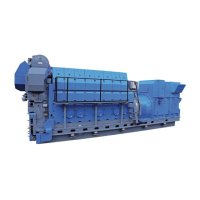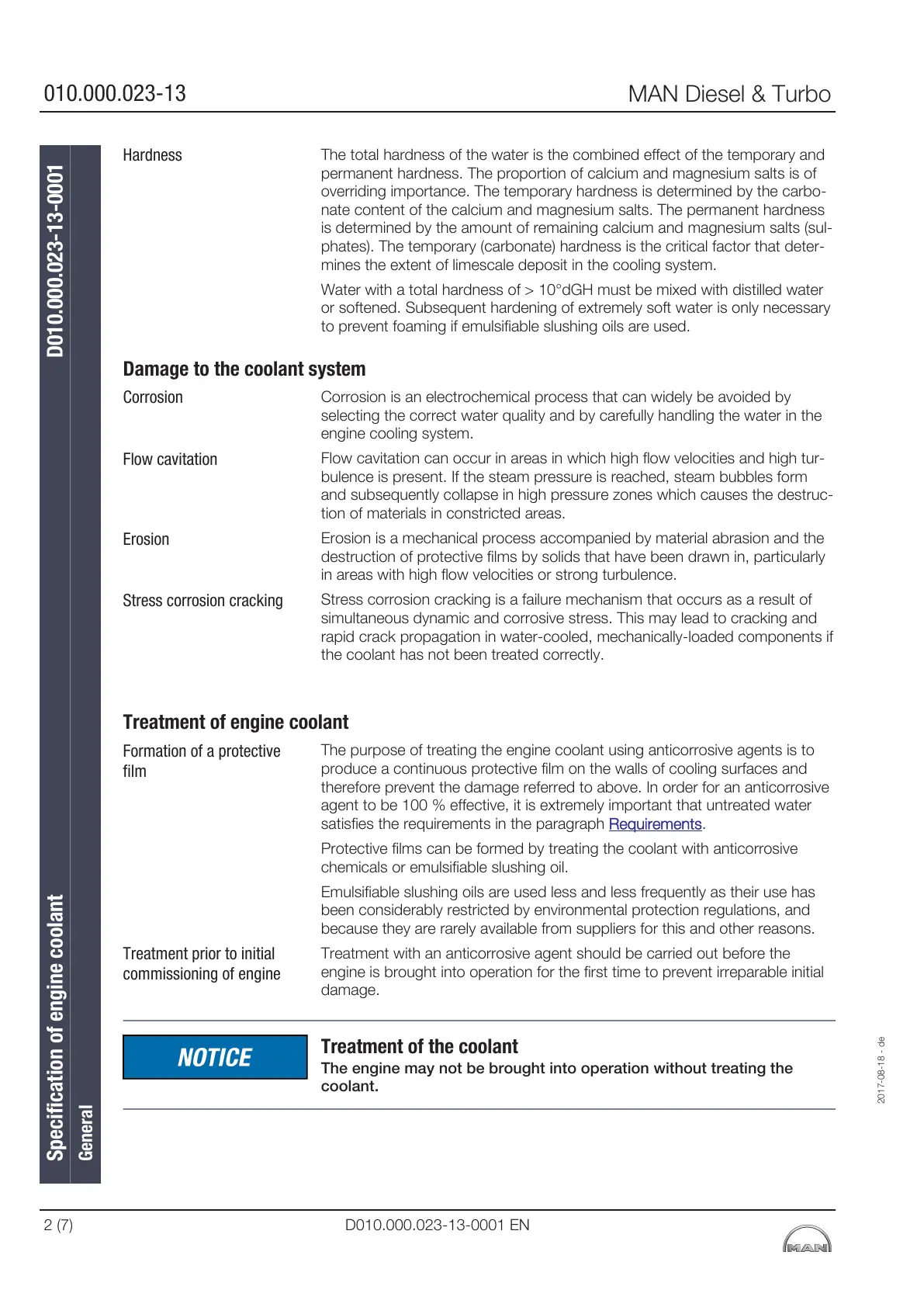The total hardness of the water is the combined effect of the temporary and
permanent hardness. The proportion of calcium and magnesium salts is of
overriding importance. The temporary hardness is determined by the carbo-
nate content of the calcium and magnesium salts. The permanent hardness
is determined by the amount of remaining calcium and magnesium salts (sul-
phates). The temporary (carbonate) hardness is the critical factor that deter-
mines the extent of limescale deposit in the cooling system.
Water with a total hardness of > 10°dGH must be mixed with distilled water
or softened. Subsequent hardening of extremely soft water is only necessary
to prevent foaming if emulsifiable slushing oils are used.
Damage to the coolant system
Corrosion is an electrochemical process that can widely be avoided by
selecting the correct water quality and by carefully handling the water in the
engine cooling system.
Flow cavitation can occur in areas in which high flow velocities and high tur-
bulence is present. If the steam pressure is reached, steam bubbles form
and subsequently collapse in high pressure zones which causes the destruc-
tion of materials in constricted areas.
Erosion is a mechanical process accompanied by material abrasion and the
destruction of protective films by solids that have been drawn in, particularly
in areas with high flow velocities or strong turbulence.
Stress corrosion cracking is a failure mechanism that occurs as a result of
simultaneous dynamic and corrosive stress. This may lead to cracking and
rapid crack propagation in water-cooled, mechanically-loaded components if
the coolant has not been treated correctly.
Treatment of engine coolant
The purpose of treating the engine coolant using anticorrosive agents is to
produce a continuous protective film on the walls of cooling surfaces and
therefore prevent the damage referred to above. In order for an anticorrosive
agent to be 100 % effective, it is extremely important that untreated water
satisfies the requirements in the paragraph Requirements.
Protective films can be formed by treating the coolant with anticorrosive
chemicals or emulsifiable slushing oil.
Emulsifiable slushing oils are used less and less frequently as their use has
been considerably restricted by environmental protection regulations, and
because they are rarely available from suppliers for this and other reasons.
Treatment with an anticorrosive agent should be carried out before the
engine is brought into operation for the first time to prevent irreparable initial
damage.
Treatment of the coolant
The engine may not be brought into operation without treating the
coolant.
Hardness
Corrosion
Flow cavitation
Erosion
Stress corrosion cracking
Formation of a protective
film
Treatment prior to initial
commissioning of engine
Specification of engine coolant D010.000.023-13-0001
General
2017-08-18 - de
010.000.023-13
MAN Diesel & Turbo
2 (7) D010.000.023-13-0001 EN

